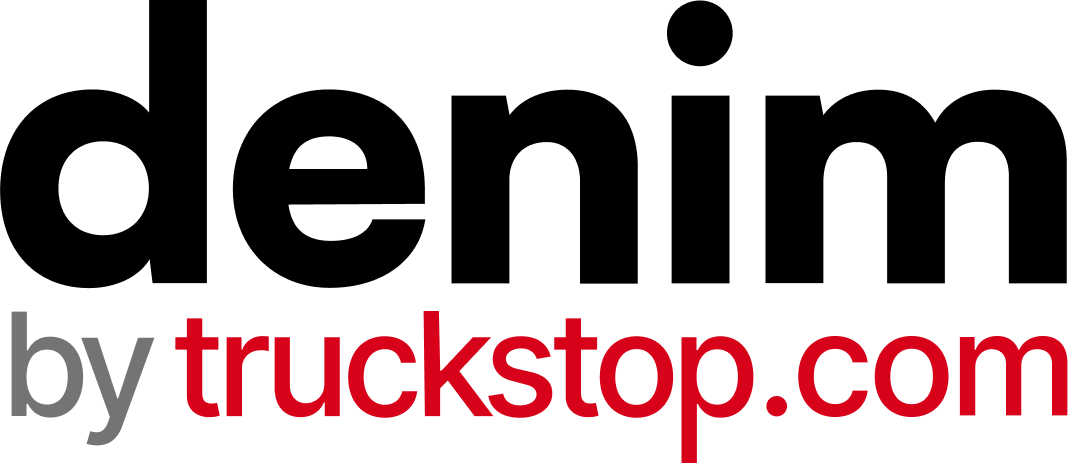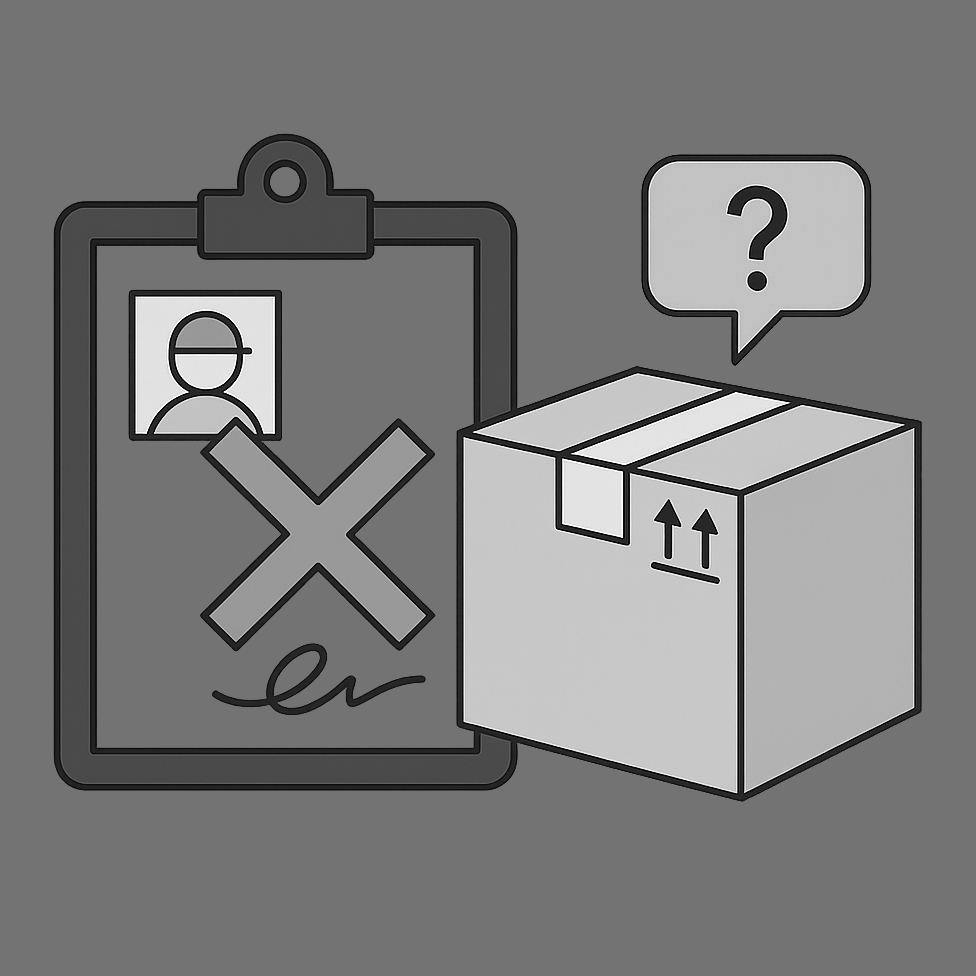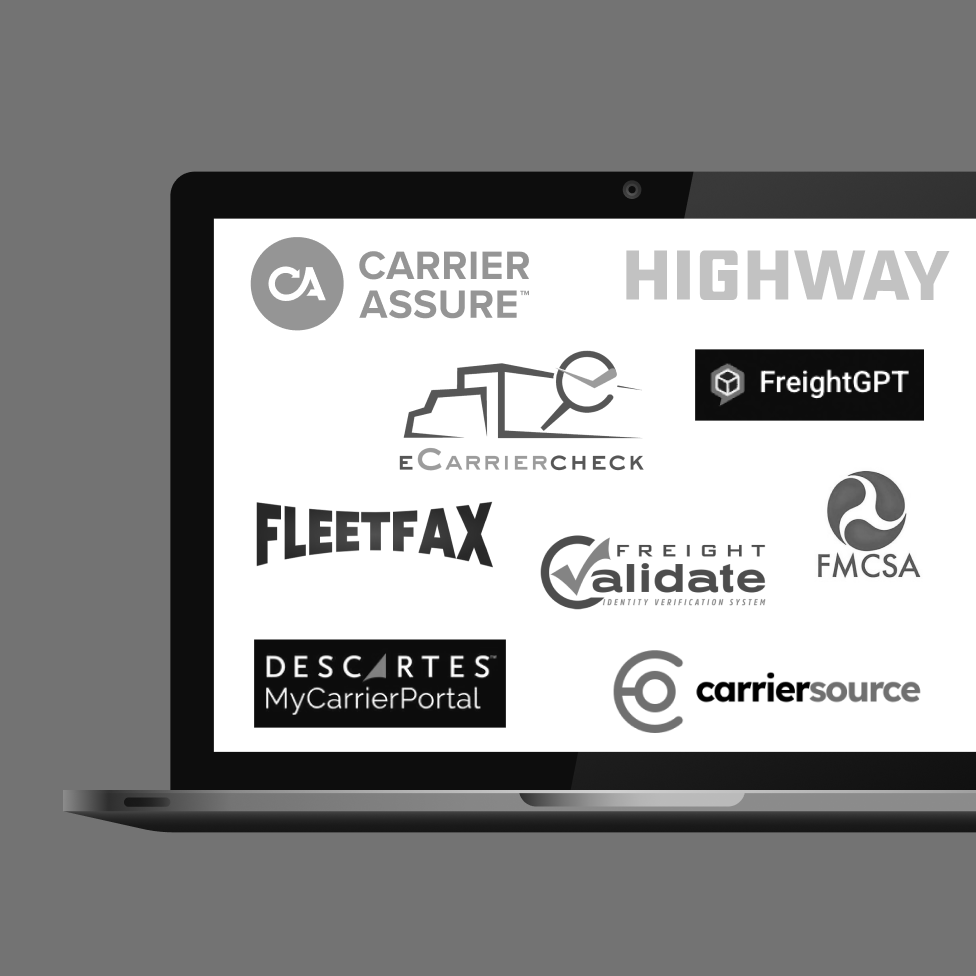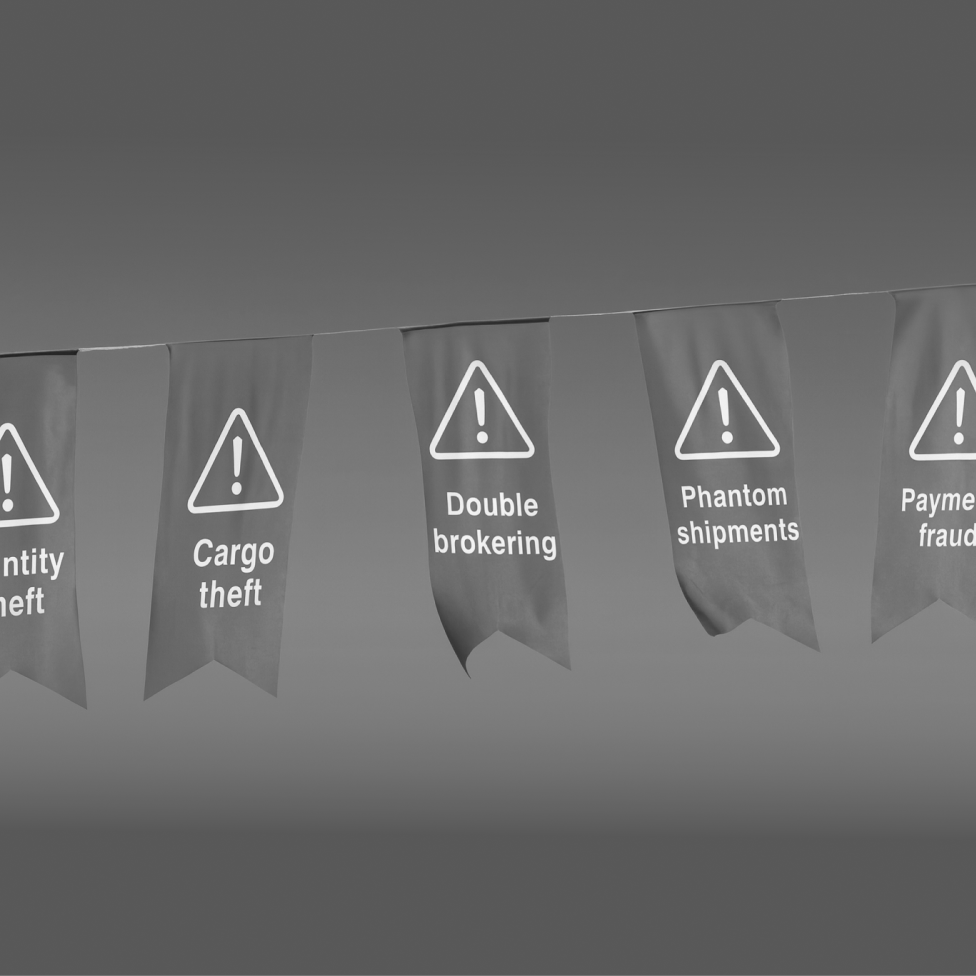Does it feel like your team is constantly bouncing between one software or another to get the full picture of your brokerage? Every modern freight broker uses software and technology to enhance their operations, but sometimes it seems like these systems can cause almost as much pain as they solve when you need six different logins just to find out the status of a load.
That’s where freight software integrations come in. Integrating your tech stack so all of your software communicates with each other is no longer an option - it’s a necessity. If you feel like you or your team are getting bogged down in redundant systems that all only give one small piece of the logistics puzzle, it may be time to re-evaluate your brokerage’s software integrations.
In this article we’ll review the importance of integrating all of your brokerage’s software systems into one cohesive ecosystem. Creating these integrations makes it easy to find information at a glance, and gives you and your team the time back that they spend swapping between systems, reduces erroneous or double entries of information, and more.
All integrations aren’t created equal, though. When integrating your systems it’s important to keep in mind your brokerage’s existing workflows and systems, and ensure that these integrations work FOR you, not against you. If an integration isn’t set up correctly, you may find data is entered incorrectly, is stored in the wrong place, or isn’t updated in every system, causing confusion and bogging down your operation. Keep reading to find out exactly what needs to happen to ensure your systems are integrated correctly, efficiently, and in a way that helps your freight brokerage grow.

Do you know how many softwares your team uses? This guide will walk you through all the steps to audit and implement your freight technology stack stress-free.
Data Silos in Transportation
In the transportation industry, it’s easy for some software systems to end up in a fragmented mess, causing what we refer to as “data silos”. These data silos occur when information about a load, route, carrier, or customer exists in one system (or multiple systems), but is “siloed” away from other systems, so when one is updated, added, or removed, the others remain unchanged.
If your team is constantly logging in to multiple systems to manually update statuses, payments information, post loads, update carriers or customers, and more - then you may have data silos in your organization. These silos lead to slow responses, errors, poor customer service, and countless other problems for brokerages.
Software integrations are the best way to avoid data silos, but first, let’s review some of the disadvantages of maintaining the status quo.
The Disadvantages and Challenges of Data Silos:
When information is stuck in data silos, it causes one of two scenarios: either someone must manually update every system to make the data match, or the information isn’t updated and remains updated in one system and outdated in another. Both of these scenarios cause errors, waste time, and make running your brokerage harder.
Human error with duplicated data entry:
If your brokerage knows of all the areas where data needs to be updated, one way to solve the problem of data silos is to have someone on your team update each and every system manually so all of the data matches.
This can sometimes solve the problem temporarily, but also increases the risk of human error. When staff are manually updating data entries, it becomes easy to make mistakes, forget an entry or system, add an extra zero or decimal point, and so on. These errors slowly build until suddenly it seems like some of your systems are completely useless.
Inefficient use of time
Even if your staff is completely accurate 100% of the time when entering duplicate data into each silo, they still end up wasting an inordinate amount of time. These tasks are often completely automatable, and are frequently for free or very low cost.
So not only are your staff wasting time that could otherwise be used finding new clients, securing new loads, or generally moving the business forward - they’re also costing your brokerage money that could be spent elsewhere! This inefficiency causes many brokerages to lose business and have decreased margins across the board, all for something that could be automated.
Harder to make decisions
Lastly, data silos cause information to be less reliable, making it almost impossible to make well-informed decisions, let alone make them fast. Have you ever been told it will take days (or weeks!) to gather relevant data for one decision or another? With a well-integrated tech stack, gathering this information can take minutes instead of days, and ensures your data is reliable.
With these challenges in mind, it’s more important than ever to ensure your freight tech stack is integrated across the board. An integrated freight tech stack ensures data validity and integrity, saves your team dozens of hours weekly (and helps keep your team lean), and improves broker decision-making.
What are Freight Technology Integrations?
Freight tech integrations are the connections between various pieces of software that allow them to communicate with each other. This connection, often through an API connection or EDI (Electronic Data Interchange) between two or more systems, automates and optimizes your business’s workflows.
Here are the basics of how most freight tech integrates:
- How information flows between technology providers: When your various pieces of technology are integrated, information flows between these systems seamlessly. This two-way connection allows information to be updated automatically in one system when another is updated - ensuring there are never any errors or duplicate information between systems. These systems often can send data between two or more other systems, for example allowing your TMS to update a load board, carrier onboarding platform, and payments system with updated carrier information all at the same time.
- Open API connections: An Open API connection, also known as a public API, allows any developer to create an API connection between two or more systems. These connections are often free and allow any brokerage to connect one piece of software (for example, your TMS), with another (like a load board or accounting software). API connections are the bread and butter of software integrations, and allow the free and fast exchange of data between all of your brokerage’s systems.
- EDI connections: An EDI (Electronic Data Interchange) is another way to connect various systems in your brokerage. These are often used for more easily transmitting important documents like invoices, purchase orders, shipping documents, bills of landing, and more. This connection is more specialized, and allows secure transmission of documents that previously would need to be sent as a fax or email attachment, and then entered into another system. An EDI connection also helps brokers connect their systems to outside organizations (like a customer or carrier), and automatically transmit information that would traditionally be sent on paper documents and need to be manually entered. These connections reduce human error, save time, improve your data security, and more.
Freight Integrations Case Study: FreightZap
FreightZap, like many brokers, depended on technology for their brokerage at every step of the process. They were seeking a freight payments platform that integrated with their TMS, and considered this integration to be essential to provide a world-class experience for their carriers and customers.

By integrating their TMS with Denim’s factoring and payments software, FreightZap saw a notable 15% improvement in operational efficiency. "The way you've streamlined our processes is remarkable," Roderick notes.
Efficiency is critical for a growing brokerage. Denim's easy-to-use interface and analytics dashboard support FreightZap's fast decision-making. Saving time isn’t just about productivity, but also provides strategic value, allowing FreightZap to focus more on business development and client relationships.
"We've experienced a significant reduction in administrative overhead, and our team can now focus on what truly matters: building and nurturing relationships with customers, carriers, and trade partners and providing exemplary service."
Essential Integrations
While there are many systems that can be integrated into any brokerage, there are a few that we consider “essential integrations”. These integrations are going to be the best bang for your buck, allowing brokerages to automate tasks that would previously take hours every week. Integrating these systems will save your brokerage both time and money, and provide new resources that can be deployed on non-administrative tasks.
TMS and Freight Factoring Integrations
An integration between your TMS and freight factoring is one of the first brokers should investigate. This connection helps automate and streamline the billing and payment processing for every load, improving cash flow and reducing administrative overhead.
Integration Objective: The goal of a TMS and freight factoring integration is to automate the process of invoicing customers, receiving payments, and making payments to carriers. This automation reduces mistakes caused by manually entering invoice data, ensures both you and your carriers get paid quickly, and cuts down on staff hours spent billing and communicating with customers.
How it works: An API connection between your TMS and freight factoring partner (such as Denim) can trigger automatic invoice generation when deliveries are confirmed. These invoices can then be automatically sent to the freight payment platform, which can perform tasks such as factoring the invoice, paying carriers, and more.
This process saves time on every shipment, ensuring invoice accuracy (because the data is automatically transferred), speed, and faster payments for everyone involved.
Carrier Onboarding → Freight Factoring and Payments
Integrating your carrier onboarding process or software with your freight payments system can streamline carrier onboarding, reducing admin time and making it easier for carriers to work with your brokerage.
Integration Objective: Syncing your carrier onboarding process with your factoring and payments software means you can easily transfer sensitive information, such as payment details, between the two systems without any human intervention. This not only ensures accuracy (nobody likes having a payment returned because a bank number was typed incorrectly!) but also reduces the risk of duplicated payments and the need to store sensitive information about carriers in your brokerage.
How it works: You can automate payments to carriers from day one of onboarding through an API connection between your carrier onboarding system and payments platform. This connection shares the carrier profile (which can collect information from carriers such as bank account details) with the payments platform automatically, ensuring data integrity and validity.
Carrier Onboarding → TMS → Freight Factoring Integrations
This connection builds on your carrier onboarding process and existing systems to improve carrier relationships and speed up the onboarding and payment processes.
Integration Objective: The goal of integrating your carrier onboarding, TMS, and freight factoring software is to streamline the onboarding process and ensure regulatory compliance. This integration also ensures that every party is prepared with the correct documentation and information for the entire lifecycle of every load, from carrier onboarding to payment after a load is delivered.
How it works: By integrating your TMS and carrier onboarding software, either through an EDI or API connection, your TMS can automatically check and verify carrier credentials, insurance details, and compliance documentation. Say goodbye to manual review and document verification! Next the carrier is approved in your system for load assignments, and the factoring integration automates the collection of payment details, issuing payments, factoring, and more.
With all three systems integrated, your onboarding process becomes seamless for your brokerage and carriers, and guarantees accuracy for payment details and compliance documentation. This connection also limits the need for your brokerage to securely store personal carrier information, such as banking details, tax information, and addresses.
TMS and Loadboard Integrations
Now that your systems for carriers and payments are integrated, it’s time to speed up the process of booking new loads. With a TMS and load board integration, your team can easily automate the posting and booking of new loads, improve load matching, and more.
Integration Objective: The goal of a TMS and load board integration for freight brokers is to improve load-matching efficiency through automation. This integration can allow your team to search, post, or bid on loads directly through your TMS.
How it Works: With an API connection between your go-to load board and TMS, load details from the TMS are automatically posted to load boards, and carriers can bid or accept loads directly through the platform. When these loads are accepted, they’re then automatically updated in the TMS, streamlining the matching process and reducing manual entry.
Read more about other essential TMS integrations for freight brokers here.
TMS and Track and Trace Integrations
Connecting your TMS and Track & Trace software is an essential step in gaining visibility, analytics, and real-time data for every load. This integration automatically brings valuable tack and trace information about every shipment directly into your TMS.
Integration Objective: The goal of a TMS and Track & Trace software integration for freight brokers is to provide real-time shipment information in your TMS. This enhanced visibility allows brokers to give internal stakeholders and customers real-time updates on shipments, without logging in to multiple systems and collecting data.
How it Works: An API connection between your TMS and Track & Trace software will allow almost instantaneous data transfer when the shipment’s status is updated. This provides real-time location data, status updates, and notifications of any delays or issues directly in the TMS. This information can then be shared directly with customers via customer portals or automated alerts, which increases transparency and customer satisfaction. Your team will finally be able to spend less time on the phone updating customers, and more time selling or finding new loads.
Freight Payments and Accounting Integrations
Outside of the TMS, we also recommend integrating your freight payments software with your accounting software. This helps automate previously burdensome accounting tasks that bog down many brokerages.
Integration Objective: The goal of integrating a broker’s freight payment software and accounting software is to streamline the reconciliation of financial records. This integration helps your team quickly (often automatically) record payments to carriers into your accounting software, ensuring accuracy and efficiency. This integration reduces the chances of mistakes when manually recording and reconciling payments. You’ll be able to operate with confidence that every transaction has been recorded and recorded accurately.
How it Works: This connection is generally an API connection between your freight payments system and accounting software. When payments are processed through your freight payments platform, all transaction details are automatically synced with your accounting software. This ensures accurate financial records for your brokerage, and simplifies the reconciliation process for accounts.
Implementing These Integrations
We’ve covered a lot here, and implementing these integrations might seem daunting at first. Rest assured, most software systems make this process easy, and some will even set up the integrations on your behalf.
There are a few things to keep in mind when beginning to integrate your freight tech stack:
- Invest in software systems: First, if you don’t have one or more of these pieces of technology integrated into your business, we recommend starting the search now. Read more about essential software for every brokerage here.
- Choose the right solutions for your needs: Next, be sure you’re choosing the right software solutions that offer open API’s, and are designed to work within the broader freight tech ecosystem. Using old and outdated software solutions can cause far more strife than switching to a modern solution. If your current systems don’t have an option for API connections with other systems, it may be time to investigate other solutions.
- Customize your integrations: Once you’re sure it’s possible for all of your systems to integrate, it’s time to begin tailoring these systems to work exactly how you need them to for your business. That means setting up your integrations to fit any unique processes or workflows for your freight brokerage, ensuring that all data is being entered and updated in the correct places, and that every connection is secure and efficient.
- Ask for help when you need it: Many modern freight technology partners have teams dedicated to your success, because they know that if your brokerage succeeds they’ll keep your business for the long-term. When brokers work with technology partners who understand the complexities of the logistics and finance industries, they can often find support direct support from those partners throughout the integration process.
Conclusion
Modern freight brokerages rely on technology to enhance their operations, but this reliance can come at a cost when systems are siloed away from each other and don’t communicate. With careful implementation of API and EDI connections between various systems and software in your brokerage, brokers can expect to see significant gains in efficiency, productivity, customer satisfaction, and profitability.
These systems are often built with integrations in mind, and all it takes is a little time and effort to set these integrations up. The best news is, once they’re implemented these integrations are often set and forget - they only require updates when your internal processes change or if you switch to a new platform.
Want to learn how Denim’s freight factoring and payments can streamline your payments process, improve your team’s efficiency, and improve your brokerage’s cash flow through flexible factoring? Speak with our team here and ask us how we can integrate with your existing software today.
Denim’s automated solutions streamline your back-office operations. Explore our solutions to see how Denim can help your business scale efficiently.
There's a better way


.png)




